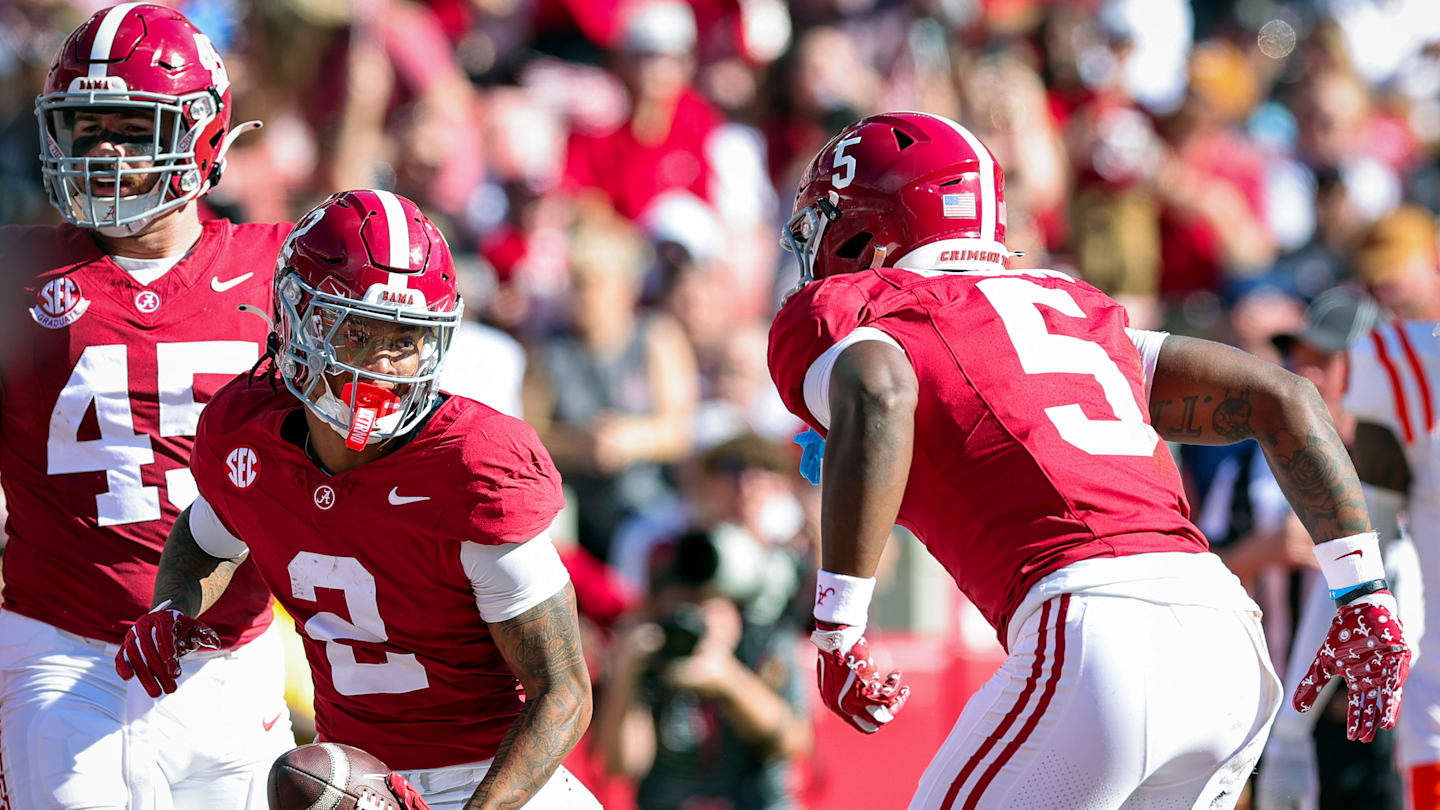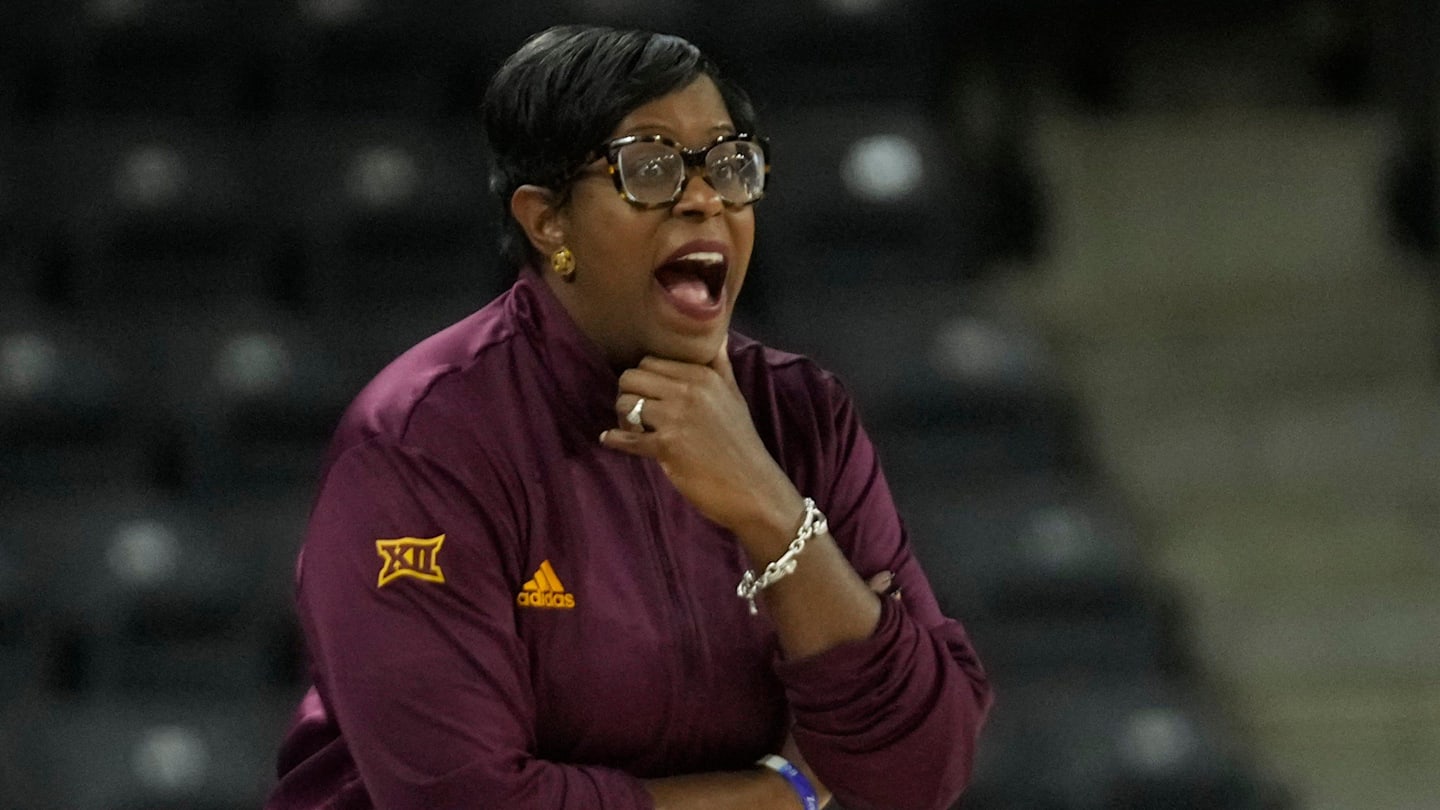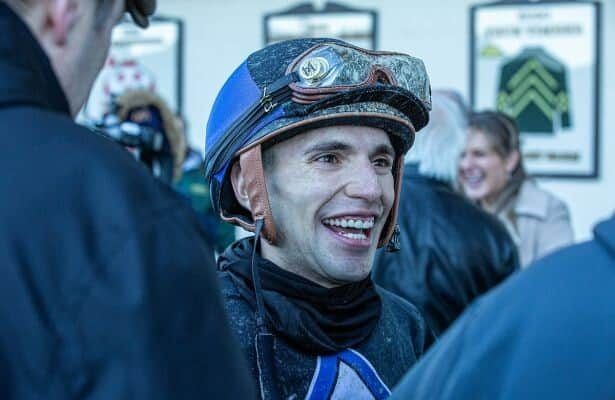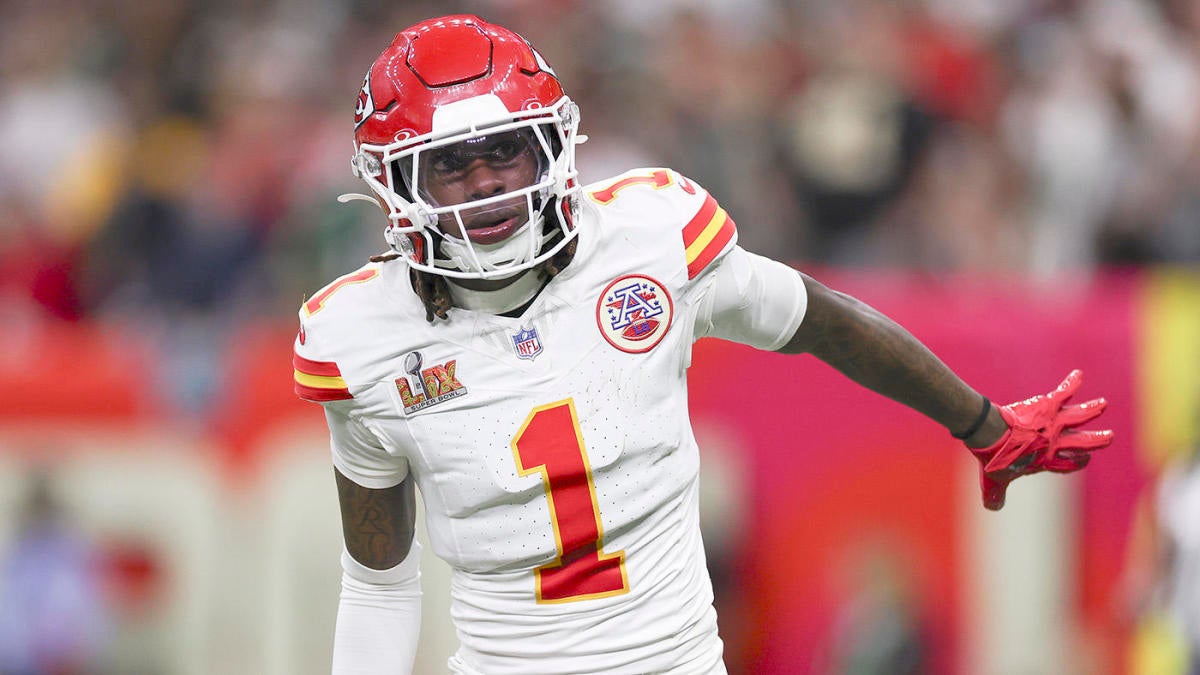Notre Dame football details injury updates for 2025 spring roster
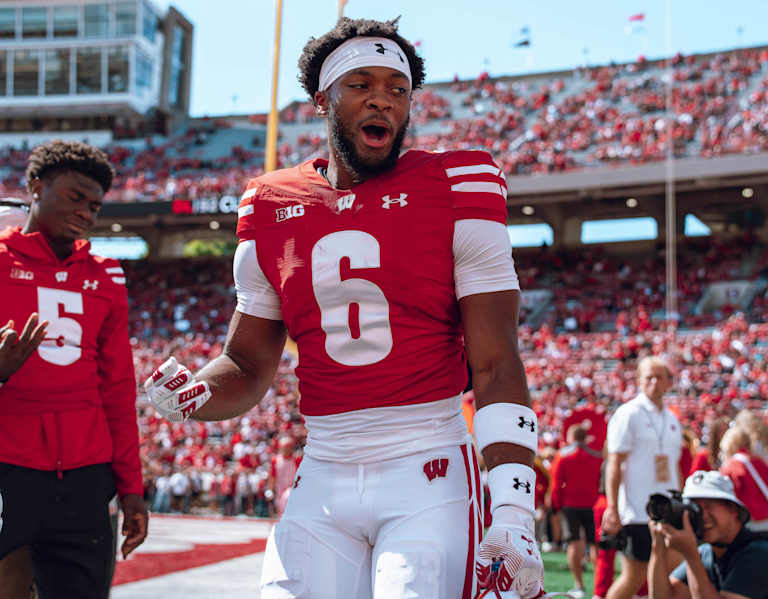
SOUTH BEND, Ind. — Injury updates from Notre Dame’s football program typically come from head coach Marcus Freeman or brief announcements released by the program when deemed necessary.
The Irish took their transparency a step further Thursday when John Wagle, Notre Dame’s associate athletic director for sports performance, and Rob Hunt, Notre Dame’s associate athletic director for athletic training and rehabilitation services/head football athletic trainer, met with reporters Thursday inside Notre Dame Stadium to discuss the impact of the longest season in Notre Dame football history, which included 16 games in a run to the College Football Playoff National Championship Game on Jan. 20.
Wagle shared the vision for Notre Dame’s spring practice schedule, which is set to begin March 19. The Irish will complete somewhere between 10-15 practices, Wagle said, that will culminate with the Blue-Gold Game on April 12.
SUBSCRIBE TO INSIDE ND SPORTS TO STAY IN THE KNOW ON NOTRE DAME ATHLETICS
Notre Dame, which lost 34-23 to Ohio State in the title game, will have individualized plans for players who had heavy workloads last season and are recovering from old or recent injuries. Hunt shared a list of players who are fully recovered from previous absences and other players who will be sidelined for various reasons.
Inside ND Sports has included the list of players below and a full transcript of Hunt’s comments and the other questions he answered Thursday.
The following players are not expected to participate in spring practices due to injuries.
• S Jalen Stroman’s right clavicle injury at Virginia Tech last season never fully healed and required further attention.
• OL Chris Terek recently had surgery on his right foot and will eventually need surgery for a left shoulder injury.
• DT Davion Dixon recently suffered a right pectoral injury and will have surgery next week.
• DE Jordan Botelho suffered a ruptured patellar tendon in his right knee against Purdue in September last season, which required surgery.
• OL Ashton Craig suffered a torn ACL in his left knee against Purdue in September last season, which required surgery.
• DE Boubacar Traore suffered a torn ACL/LCL in his left knee against Louisville in September last season, which required surgery.
• TE Cooper Flanagan suffered a left achilles injury in the Sugar Bowl against Georgia in January, which required surgery.
• CB Chance Tucker suffered a torn ACL in his right knee in August, which required surgery.
• LB Kahanu Kia suffered a torn ACL in his left knee last summer, which required surgery.
These players are recovering or will be recovering from surgeries, but they’re expected to participate in spring practices in some limited form:
• WR Will Pauling required surgery on the fifth metatarsal in his right foot, which was discovered in his physical exam upon his transfer from Wisconsin in January.
• OL Billy Schrauth will have surgery on his left ankle, which is a separate injury from the right ankle injury that sidelined him for four games last season.
• OL Anthonie Knapp had surgery on his right ankle following an injury in the CFP semifinal at the Orange Bowl.
• DL Cole Mullins had surgery on the meniscus in his left knee last fall.
• OL Robbie Wollan had surgery on the meniscus in his right knee shortly after the title game.
These players who missed time last season aren’t expected to have limitations in spring practices:
• QB CJ Carr suffered an elbow injury in a September practice that kept him sidelined for most the fall.
• DT Jason Onye was sidelined for personal reasons after playing in the first five games of the season.
• S Taebron Bennie-Powell had surgery on the labrum in his left shoulder in August.
• RB Gi’Bran Payne had surgery on the ACL in his right knee in May.
• OL Styles Prescod had surgery on his right shoulder in September.
• DL Quentin Autry suffered a shoulder injury last preseason.
Quotes from Hunt are largely verbatim. Questions may have been edited for brevity and clarity.
Opening statement: “I’m up here to really provide some clarity and some expectations for our roster from an injury side of things, and give you a grouping of how we’re approaching the spring with some of our injured guys here. I grouped them into four different groups here. You guys got a group of two that just got handed out to you.
“I’m gonna start with a handful of guys that are fully returned that are not on your list but missed last season for various reasons. Gi’Bran Payne, Styles Prescod, Taebron Bennie-Powell, Quentin Autry, Jason Onye and CJ Carr are all full participants. They’ve had an unrestricted winter program and really have no limitations for themselves as we’re moving into the spring. Really great recoveries for each of them and should be full participants in all that we’re doing as we move forward into the spring here.
“Our next group is what I’ve kinda labeled as a modified group. So they’ve got some previous injury or current injury that they’re working through. Some may or may not have had some surgical procedure. And they’re in the middle or kinda transitioning through this injury process for themselves. What they’re doing is gonna based individually from what John shared with you earlier in terms of how we identified what their capabilities are and trying to capture as much development and practice time within the framework of their injury process.
“So Cole Mullins is recovering a knee injury, a knee surgery that he had last fall. He’s gonna be limited early in our first few weeks of spring ball but expect him to have some participation as we get to the second part of our spring practices.
“Will Pauling joined us in January, and on his physical exam process we identified a stress injury in his foot. So we quickly took care of that. He’s in the fourth week of his recovery there. He’s doing outstanding. It’s been a really, really good recovery. But we value offseason conditioning, and he missed the majority of our offseason conditioning. So he’s gonna transition into our spring practices as we build up volume and intensity for him. You can expect to see him doing some drill work early on and move into some more football-related team activities as we get to the back end of spring.
“Billy Schrauth, we’re gonna clean up his ankle. He got his other ankle. We’re gonna have a cleanup procedure on his ankle this week during spring break. Similar, should be a quick recovery. He’s had the majority of our winter program, so we’re gonna pause here for a little bit to kinda do a little maintenance on that and allow him to have the back end of spring as well. As John said, he was one of our guys we had identified earlier that would have been an individualized-plan guy for him as we would control the amount of work that he was going to be doing in the spring anyway. So this is good timing for him to be taking care of that moving into the fall, full summer, that type of work.
“Anthonie Knapp had surgery a couple days after the Orange Bowl and is continuing to progress really nice through that for his ankle injury that he sustained there. He also has progressed nicely. But it’s gonna be kind of give or take in terms of how much work that he gets as he continues to progress over the next three-to-four weeks in his activity and training and intensity and buildup of volume. So that we’re not just throwing guys that missed winter programming back into the fire right away.
“Robbie Wollan, one of our walk-ons, had meniscus surgery just after the surgery and will be also gradually brought back into activities as we get going here through spring football.
“A large group of guys here with no practice. Most of them here are known entities.
“Jordan Botelho is progressing very well from a patellar tendon rupture versus Purdue last year. He’s about five-and-a-half months in and is absolutely killing it in the rehab and return-to-play process. I expect a great summer for him. I expect to him to have a full summer of unrestricted activities. So, our targets for him are to continue to progress through spring here. He’s not gonna have any drill work, any individual work. But continue to add strength in preparation for him to have an unrestricted summer.
“Ashton Craig, very similar. Same day. He’s five months in post-op ACL and is progressing nicely.
“Davion Dixon, one of our midyear [freshmen], suffered an injury last week that’s gonna require surgery. He’s gonna have a pec tendon repair here during spring break and will miss all of spring. That will allow him to then to have a full summer of participation for himself.
“Cooper Flanagan is eight weeks into his achilles repair and is progressing nicely. He’s gonna miss all of spring. He’s got continued work through the summer. These are anywhere from eight-to-10 months in terms of his recovery. It’s just gonna be for him a gradual progression back to activity and working through that rehab. He’ll miss all of spring and be modified for the early part of the summer.
“Kahanu Kia is eight months into an ACL rehab. He previously injured the same knee on his Mormon mission. So this is ACL times two for him. We’re gonna be super intentional about his recovery. The goal for him is to have an unrestricted summer. He’s doing really well. If it were ACL one, we might be pushing a little bit more. But this ACL two, so he’s gonna follow a little bit longer return-to-play timeline for himself there.
“Jalen Stroman, very similar to Will. On his physical exam process, he had an injury last year at Virginia Tech, a clavicle fracture that ended up not healing for him. So we needed to take care of that when he got to campus. He’s gonna be moving around a little bit during spring ball in the second half. But he’ll have no contact. He’s not gonna be exposed to any type of risk for himself. Expect a full recovery and unrestricted activity for him in the summer.
“Chris Terek had some cleanup on his foot and will also have a second surgery on his shoulder on his shoulder once his foot recovered enough. So, Chris is gonna miss all of spring here with us and be fully ready for the fall.
“Boubacar Traore had his ACL/LCL injury from the [Louisville] game and is progressing really well. Super encouraged his progress. He’s five months in on that surgery. Again expect him to have an unrestricted summer for himself. He’s gotta build more strength and those kinds of things. He’s doing very nicely at this point.
“Chance Tucker is six months in from his ACL/MCL injury and is in a great position for an unrestricted summer.
“A group of guys that we have unlisted on your document here. As John mentioned, just kind of looking through what their work was through the CFP season, these guys you may or may not notice, but we’ve got individualized plans for several of these players that are going to have some restrictions on impacts, some restrictions on running. That’s gonna be dictated by how they’re doing, but also what the structure of the practice would be at that time. So if you observe practice, you may see some of these guys doing some things and not. It doesn’t mean that they’re injured in any form. But it’s just a planned approach for them to have individualized development plans so that they get the work that they need to prepare for the fall but also not burn out all their tread on their tires.
“So, I’m just gonna kinda list through these guys just as an awareness piece for y’all, then I’ll answer any questions that you may have: Josh Burnham, Bryce Young, Drayk Bowen, Jaylen Sneed, Leonard Moore, Christian Gray, Adon Shuler, Jeremiyah Love, Aamil Wagner and Jaden Greathouse. I think anyone could have come up with that list of guys in terms of what they did throughout the season. It’s a pretty easy thing to do. But don’t be alarmed when you see some guys not doing something that’s actually planned.”
What was the process with CJ Carr like? Was there any thought of having surgery on his elbow?
“He was injured in practice. Those are certainly unfortunate. Once we identified the injury, then it was just a structured plan to return him to play. Obviously, a lack of information for others gives tons of opportunity for speculation. We had a 10-12 week return from within the first few days and executed it really well. He’s done remarkable. It was just a super slow, intentional process that required very, very detailed and specific things that he had to accomplish. There was a period of rest. There was a period of light work and training that then went into a throwing program.
“I think he was probably more frustrated than anyone, just because he’s so competitive. That opportunity to not get reps. He took advantage of all those opportunities, but it was a super intentional that really by the first of October we knew that he wasn’t going to be doing any meaningful team reps until December. The advantage for us was that he actually had opportunities in December and January that when he was clearing through his return-to-throwing program to actually get some work. It was a good thing for us to actually have that runway.”
With Jordan Botelho’s recovery, is that something you know as soon as the surgery is over? Or is it all the work that he’s done to get himself to this point? Or both?
“All of surgical cases, the three things that we talk about that are the most important is you gotta have really, really good surgery. That’s No. 1. You gotta have great, great surgeons that are highly skilled and understand the demands that are going to be applied afterwards. We believe we’ve got that in the physicians that support us with South Bend Orthopedics. Dr. [Brian] Ratigan fixed his knee. Our track record with them has been outstanding. Dr. Ratigan, in my opinion, is the best.
“The second piece is the rehabilitation and PT and the return-to-play programming with myself, my team and Loren Landow and his team. Obviously, I’m biased, but that’s my role. That’s my job. That’s what we do. We show up every day to plan that perfectly so that they can do that.
“And the third piece, which is the part that the athlete has the most control over, is how hard they work. If you get all three things, you get a lot of good outcomes. Just by selection bias, we’ve got a lot of kids who are super driven and super committed to what they’re doing. So, that piece is really easy. The first two we’ve got lined up pretty well, and I think we’ve had really good outcomes as a result of that.
“Jordan as later developed player is even more helpful. It’s a developed athlete. His aggressiveness and intention to be working all the time makes it even better. That’s the bonus.”
Was surgery ever a consideration for Jeremiyah Love? How did you navigate him through that whole playoff with the demands on his body?
“It was not surgical. It was never considered surgical. It was an injury that certainly the timing of it is frustrating. Had he not had the little pick at it during the Georgia game, it probably would have been less — not theatrical but just more emotion attached to it. We had some time there as well, which was in our favor. We had 20 before the Indiana game that served us really well. It allowed us to really have him go quiet for 10 days. Then we had a five-day ramp up, then five days of preparation for that IU game. But surgery wasn’t a piece.
“Then it was just how do we get him enough work. John talked about the development of practice and practice structures as we go through that with each individual player. How much does he need to be healthy? Then how much does he need to be prepared?
“As good of an athlete as Jeremiyah is, you still have to practice. You still have to get the reps and the work in to be able to do that. That was the balance of the challenge of getting him enough work to be able to go through it. Then being able to tolerate it. Being able to tolerate the less-than-optimal condition of how you feel and still perform at the highest level against outstanding competition.”
Gabriel Rubio mentioned in Atlanta that his foot still bothered him a little bit. Is he beyond that now? Is that natural for the kind of injury he had?
“A little bit of both. He has cleared through that completely. He fractured his foot and he laid down a lot of bone. The extra bone that he had in there healed the fracture but it creates a little bit of tension and soreness that you don’t want. Over time, then your body starts to take away that extra bit that was more than enough. He’s doing much better now.”
How pleased are you with the benefits of the Guardian Caps worn over helmets? Would you like to see everyone wear it for every practice? Could that be seen in a game?
“I don’t know that there’s clear data that supports or says that it is the difference in reduction in head injury. The NFL mandated for training camp, I believe, two years ago. They then studied and showed that they had a reduction in concussions. That may be due to the Guardian Caps. We strongly encouraged this past season for all of our players to wear it. We probably had about in practice ended up and was sitting at about 80% compliance at that, which was good. Our head injury numbers were pretty similar to what they were prior. I don’t know that that means that it wasn’t beneficial.
“I do think that when people — and this is my opinion here. I do think that when people have that cap on, it’s an awareness piece. I’ve got this on, so I’m gonna maybe not lead with my head. If that’s a benefit for it that we’re limiting the amount of contact that people are using their head and their helmet for, that obviously is gonna be beneficial. But inherently, football has contact to the head. There’s a risk of concussion in football whether you play with or without it. Anything that we can do as an institution to try to reduce that both in how we practice, the Guardian Caps, tackling techniques, those kinds of things, we should be bound by that responsibility to serve our players better and the best that we can, so that they limit the amount of exposure that’s to their brain.”
Do you have a sense if Notre Dame is one of the most physical practicing teams during the week? What’s the trend line now?
“We’ve evolved a ton over the 14 years that I’ve been here in terms of how we practice and limiting those exposures. Coach Freeman’s done a really good job of learning from our data that supports these drills are high contact. You have to have some form of contact so that Saturday is not this massive exposure that you’re not prepared for. But being really intentional about which ones that you have and how much you have.
“And really even looking back and going maybe the last 10 days we had more due to the competition that we faced, the type of style of play in the game that we played. And then adapting on the other end of it. Going like, hey, we had a high load over the last 10 days. We probably can’t do these three or four drills this week and trying to limit that exposure.
“We know historically the types of games and the style of play that can lead us into that. Obviously, Navy and Army are super physical games. You’re not gonna get away from that. You have to be prepared for it. But then the back end of it, we should probably reduce that as we move forward going into other games.”
Related
Alabama football’s 2025 WR room is giving “Ryde Outs” vibes
Alabama football's WR room stagnated in the final years of the Nick Saban era in Tuscaloosa. The Crimson Tide went from a dominant run of recruiting and develop
Does Michigan Football have the experience to make the College…
The Michigan Wolverines made it to the College Football Playoff for the first time in 2021 after beating Ohio State and winning the Big Ten Championship. Sin
Big 12 opener, historic Classic highlights HBCU football schedule
Courtesy of UAPB Athletics PINE BLUFF, AR.– The University of Arkansas at Pine Bluff Golden Lions football team has announced its 2025 HBCU football s
Top ten Ohio State football players entering 2025
There's great news, and just some OK news for the Ohio State football program. The great news is that the Buckeyes made good on their "national title or bust" s
